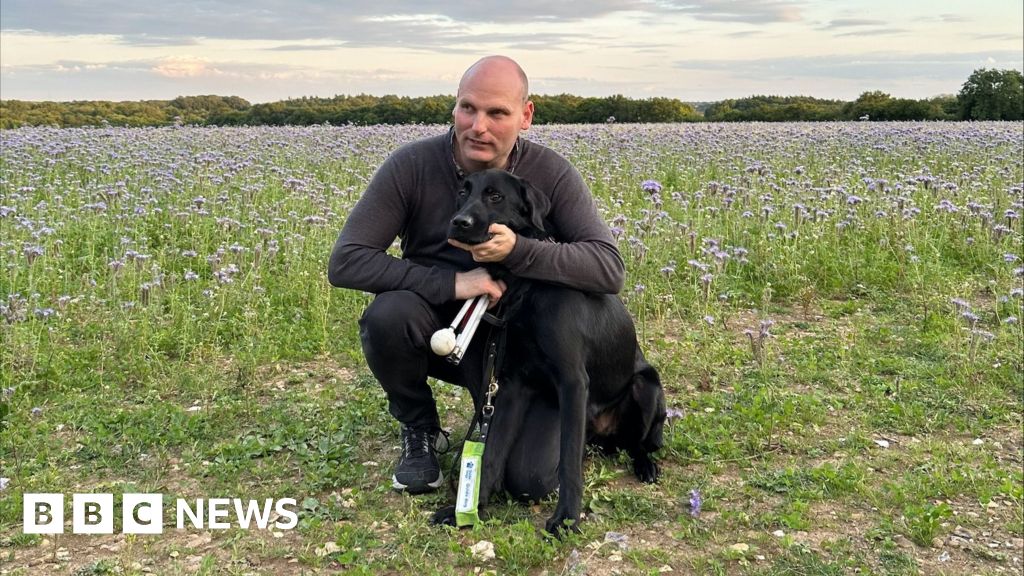As a guide dog handler of 26 years, my heart falls every time I hear the fatigued pants of dogs in heatwave weather. Animal welfare charity the RSPCA says that dogs are 10 times more likely to suffer heat-related illnesses from exercising in hot weather than from overheating in cars. Both are tremendously bad for your dog. This is because canines have a very limited ability to regulate their temperature. They do not sweat like humans – only perspiring a small amount through the pads on their paws, with their often thick fur coats meaning their core temperature can rise quickly in high temperatures. Heavy panting, difficulty breathing, excessive drooling, lethargy and drowsiness are all key signs that your dog is too hot. In extreme cases, dogs vomit and finally lose consciousness. If your dog is in trouble, theRSPCA saysyou should move the dog to a shaded and cool area and immediately pour cool, but not very cold, water over the dog, avoiding their head. The charity says wet towels should not be placed over the animal because it could cause heat to become trapped. If possible , allow the dog to drink small amounts of cool water and continue to pour cool water over them, but not so much that they begin to shiver. When breathing settles, head straight to the vets. My plea to dog owners is not to walk or exercise your dog in hot weather. Please understand that this is not fear-mongering. Your dog can overheat in moments and it is totally avoidable in most cases. It struck me as unbelievable frankly this weekend that while I, as a blind person was being sighted guided by my girlfriend in 30C (86F) weather because it was too hot for my working dog to be out, we passed nearly a dozen dog walkers obliviously walking their best friends into danger at around 1pm. I know not everyone is an experienced dog handler – but I can't begin to imagine how anyone could fail to notice the obvious discomfort, the heavy panting, the foot-dragging and laboured breathing in direct sunlight that had us reaching for our iced-water bottles. So what can we do to protect our animals in hot weather? For starters, when the mercury hits 20C, I place the back of my hand on the pavement to check I can comfortably keep it there. It's a great indicator that your dog's pads will be ok too. I always pack a foldingwater travel bowland carry chilled or iced water. In addition, when the temperature hits 24C or above, I start asking whether it's safe to be out at all and usually decide at 25C and above that it's too hot to walk my dog more than a few feet from my front door to an air-conditioned cab. But what about exercise? Your dog needs life more than it needs a walk. On super-hot days,keep your dog indoorsand ideally air-conditioned or in a cool room with a fan. Your dog will be fine without a walk for a few days but you could provide playtime at home by throwing a toy. If you are planning to walk your dog, do it in the very early morning or very late evenings. If you walk your dog in extreme heat you are literally putting their lives at risk. They're too important – keep them safe, cool and inside. Additional reporting by Molly Stazicker.
How dog walks can become deadly when the heat rises
TruthLens AI Suggested Headline:
"RSPCA Warns of Heat Risks for Dogs During Summer Walks"
TruthLens AI Summary
As the temperatures rise during heatwaves, the risks for dogs increase significantly, especially when it comes to walking them. According to the RSPCA, dogs are ten times more likely to suffer from heat-related illnesses during exercise in hot weather compared to being left in overheated cars. This heightened risk is largely due to a dog's limited ability to regulate its body temperature, as they do not sweat like humans. Instead, dogs primarily rely on panting to cool down, which can be ineffective in extreme heat. Signs of overheating in dogs include heavy panting, difficulty breathing, excessive drooling, lethargy, and in severe cases, vomiting or loss of consciousness. The RSPCA advises dog owners to immediately move overheating dogs to a shaded, cool area, pour cool water over them (avoiding the head), and provide small amounts of water to drink. Prompt veterinary attention is essential once the dog's breathing stabilizes.
The author, a guide dog handler, shares personal experiences highlighting the alarming lack of awareness among some dog owners regarding the dangers of walking dogs in high temperatures. During a recent outing in 30°C (86°F) weather, the author observed numerous dog walkers unaware of their pets' distress. To mitigate risks on hot days, the author suggests checking pavement temperatures with the back of the hand and carrying water and a portable bowl for hydration. When temperatures reach 24°C or higher, the author advises limiting walks to short distances or considering indoor activities instead. The focus should be on keeping dogs safe and cool, with the understanding that they can remain healthy and happy without daily walks during extreme heat. Engaging them in playtime at home or planning walks during cooler parts of the day can ensure their well-being while avoiding the dangers associated with high temperatures.
TruthLens AI Analysis
You need to be a member to generate the AI analysis for this article.
Log In to Generate AnalysisNot a member yet? Register for free.
